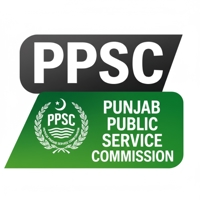
The Pakistani government is taking decisive steps to regulate the fees of private medical and dental colleges, aiming to make medical education more affordable. Some institutions currently charge as much as Rs. 3.5 million per year, making it difficult for many students to pursue their dreams of becoming doctors. This move is expected to provide relief to aspiring medical students and their families

The Need for a Fee Cap in Medical Education
Rising Costs of Medical Education
Medical education in Pakistan has seen a significant rise in tuition fees over the years. Private institutions, in particular, have been charging exorbitant amounts, making it nearly impossible for middle-class families to afford quality education.
Comparison of Medical Fees
| Institution Type | Average Annual Fee (Rs.) |
|---|---|
| Public Medical Colleges | 50,000 - 200,000 |
| Private Medical Colleges | 2.5 - 3.5 million |
Financial Burden on Students
-
High Tuition Fees: Many students are forced to take expensive loans.
-
Limited Scholarships: Private colleges offer very few scholarships.
-
Economic Pressure: Families struggle to support multiple years of education.
Government’s Decision to Cap Fees
Objective of the New Policy
The government aims to:
-
Ensure affordability of medical education.
-
Prevent uncontrolled fee hikes by private institutions.
-
Regulate fee collection to maintain transparency.
Expected Fee Cap
Reports suggest that the government will set a maximum fee limit lower than Rs. 3.5 million, ensuring affordability for a wider student base.
Consultations and Official Announcement
-
The Pakistan Medical and Dental Council (PMDC) has conducted consultations.
-
The government will soon release the official notification regarding the new fee structure.
Previous PMDC Regulations on Fee Collection
Earlier Restrictions on Fees
Earlier this year, PMDC had already imposed restrictions on fee collection, advising private colleges to halt fee charges until further recommendations were made.
Government’s Role in Regulating Medical Fees
A Medical Education Committee led by Finance Minister Ishaq Dar was tasked with reviewing and setting a fair fee structure. The committee operates under the directive of the Prime Minister of Pakistan.
Impact of the Ban on Fee Collection
-
Some colleges had to refund overcharged fees.
-
Students who had paid high fees demanded adjustments in line with new regulations.
-
Colleges were required to submit financial reports for transparency.
Impact of the Fee Cap on Students and Institutions
Benefits for Students
Reduced financial stress on students and families.
Increased access to quality medical education.
Fair and transparent fee structure.
Challenges for Private Institutions
Loss of revenue due to lower fees.
Need for alternative funding sources.
Possible decline in infrastructure investment.
Long-Term Effects on the Medical Sector
| Area | Impact |
| Affordability | More students can afford medical education |
| Quality | May improve with better regulations |
| Transparency | Ensures accountability in fee structures |
Public and Institutional Reactions
Students and Parents' Views
-
Positive Response: Many families have welcomed this move, as it relieves their financial burden.
-
Increased Interest in Medicine: More students will now consider pursuing medical education.
Medical Institutions' Concerns
-
Some colleges argue that the fee cap may affect the quality of education.
-
Institutions request government support in infrastructure and faculty funding.
The decision to impose a fee cap on private medical and dental colleges is a significant step toward making medical education more accessible. While the policy is expected to benefit thousands of students, private institutions may face financial challenges. The final fee cap announcement by the government will clarify the extent of these changes.












